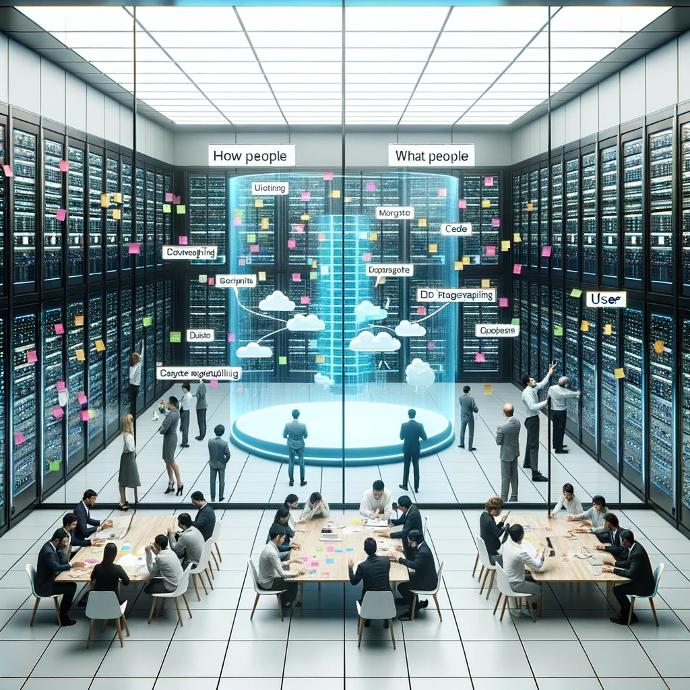The Thick Glass Wall Analogy: Simplifying Data Models for Everyone!
Welcome, dear readers! Today, let’s delve deeper into the fascinating analogy of the 'Thick Glass Wall' in the realm of data models. This analogy helps us understand the importance of communication in Information Technology, in a way that’s easy and fun for everyone!

The Thick Glass Wall Analogy: Simplifying Data Models for Everyone!
Introduction
Welcome, dear readers! Today, let’s delve deeper into the fascinating analogy of the 'Thick Glass Wall' in the realm of data models. This analogy helps us understand the importance of communication in Information Technology, in a way that’s easy and fun for everyone!
The Thick Glass Wall Analogy Explained
Imagine a gigantic, thick glass wall. This wall is so dense that people standing on either side can see each other but can’t hear or communicate verbally. Now, picture two groups of people on either side of this wall.
• How People (Developers): On one side, we have the 'How People'. These are the tech geniuses who know how to build and create technology. They understand the intricate details, the coding languages, and the technical aspects required to make a system work.
• What People (Users): On the other side, we have the 'What People'. These individuals are the users of technology. They have specific needs and questions, like “What can this technology do for me?”, “What information do I need from this system?”, etc.
The Communication Challenge
The thick glass wall represents the communication barrier between these two groups. The 'How People' might struggle to understand the exact needs of the 'What People', and vice versa. This misunderstanding often leads to the creation of technology that doesn’t fully meet the users’ needs, resulting in project failures.
Data Models: Similarity to 3D Drawing
Here’s where data models come into play, acting like a magical 3D drawing or blueprint. Imagine you want to build a beautiful house. The 'What People' might not understand architectural drawings, but they can visualize the house through a 3D model. Similarly, a 3D model helps workers understand how to turn the design into reality.
A data model works in the same way:
• Visual Representation: It provides a visual representation of data and how it’s organized, making it easier for non-tech-savvy users to understand the system’s structure and functions.
• Guidance for Developers: It serves as a guide for developers to build the system according to the users’ needs, ensuring that the final product is user-friendly and effective.
Examples of Visual Data Models
• Family Tree: Think of a family tree. It visually represents the relationships between family members, making it easy for anyone to understand their ancestry. In the tech world, a similar visual model can represent the relationships between different data points.
• Mind Map: A mind map is another example. It’s a visual way to organize and represent information, with a central idea in the middle and related ideas branching out. This helps both tech experts and users understand and explore complex concepts easily.
Conclusion
The Thick Glass Wall analogy beautifully illustrates the communication challenges in technology development and how data models bridge the gap. With visual data models acting as 3D drawings, both 'How People' and 'What People' can work harmoniously to create technology that is not only powerful but also user-friendly and intuitive. Happy learning! 🌟